EARTH element key words through the lens of Chinese Medicine are body, matter, gravity, balance, steadiness, substance, support, nurturing, being grounded, maturity, density, abundance... In Chinese medicine Earth represents the season of Late Summer and transition times between seasons, in our bodies it corresponds to Spleen and Stomach meridian channels and is linked not only to our body's ability to digest food but our overall capacity to be nourished by life, ability to think clearly, metabolise our past experiences.
I love using Chinese Medicine 5 phase wheel as an inspiration for moving with the season. Ancient Taoist alchemists based an entire philosophy and healing system on observing these cycles of change in nature. Each element and season brings forth its own alchemy, offering its gifts but also carrying its shadows. Like a mandala, this cyclical map is both - an expression of unity and diversity, wholeness and interconnection.
The 5 elements are alive both around us and in us;
they describe the movement of all life and all energy and
embody all the qualities we encounter in Nature.
Through understanding the five Elements
we may begin to understand both Nature and ourselves" J.R. Worsley
they describe the movement of all life and all energy and
embody all the qualities we encounter in Nature.
Through understanding the five Elements
we may begin to understand both Nature and ourselves" J.R. Worsley
We are cyclical beings, but there are way more cycles than just the seasons. Our energy waxes and wanes with the moon, we go through shorter or longer phases in our life that carry an energy that resembles one of the seasons more than others. There is so much to learn from nature and that is what I always aim to do when offering a series based on the 5 elements.
EARTH element is so rich in symbolism. In Chinese medicine, Earth is considered the prime stabilising force, it provides continuity, balance, stability, it sustains, nurtures and nourishes: on social level it correlates to being connected, our ability to take care of ourselves and others, it stands for our ability to trust - ourselves, others and life. There is so much to experiment with when we start to embody some of these qualities in practice.
In Chinese medicine Earth element in the body is represented by the functions of Spleen and Stomach, related to our metabolism, digestion on physical level and to our ability to take in assimilate and "digest" information coming in through our senses on a mental level.
The spirit (Shen) housed in Spleen is called Yi and is often translated as intellect and represents clear thought and intention. It stands for our ability to make sense of our experiences, organize our thoughts and feelings. The Chinese character for Yi (the spirit of Earth) can be translated as "Heart's song", therefore Earth element is about embodiment and brining spirit into matter, bringing our visions, intentions and dreams into the material world, following through with our plans and showing up in our lives.
Imbalance in Earth element shows up as anxiety, worry, overthinking, rumination, nervousness, mistrust, low self-esteem. Balanced Earth leaves us grounded, supportive, caring, able to trust, confident, compassionate and empathetic.
EARTH element is so rich in symbolism. In Chinese medicine, Earth is considered the prime stabilising force, it provides continuity, balance, stability, it sustains, nurtures and nourishes: on social level it correlates to being connected, our ability to take care of ourselves and others, it stands for our ability to trust - ourselves, others and life. There is so much to experiment with when we start to embody some of these qualities in practice.
In Chinese medicine Earth element in the body is represented by the functions of Spleen and Stomach, related to our metabolism, digestion on physical level and to our ability to take in assimilate and "digest" information coming in through our senses on a mental level.
The spirit (Shen) housed in Spleen is called Yi and is often translated as intellect and represents clear thought and intention. It stands for our ability to make sense of our experiences, organize our thoughts and feelings. The Chinese character for Yi (the spirit of Earth) can be translated as "Heart's song", therefore Earth element is about embodiment and brining spirit into matter, bringing our visions, intentions and dreams into the material world, following through with our plans and showing up in our lives.
Imbalance in Earth element shows up as anxiety, worry, overthinking, rumination, nervousness, mistrust, low self-esteem. Balanced Earth leaves us grounded, supportive, caring, able to trust, confident, compassionate and empathetic.
EARTH ELEMENT THEMES
EARTH ELEMENT EMBODIMENT VIA THE ENERGY CHANNELS
Most people are familiar with the Chinese Medicine acupuncture maps, but there are many more channels that run through the body, connecting all the way from the surface of the body to the deep interior of the body and to the organs. Below you can see the pathways of the sinew channels (also called muscle-tendon channels) that run more superficially in the body. In Chinese these channels are called Jin Jing where Jin translates to sinews meaning tendons, muscle, ligaments and fibrous tissue. These are broader longitudinal bands of muscles, tendons, ligaments and fascia that wrap (or "knot" as they refer to it in TCM) at the big joints of the body (hip, knee, ankle, shoulder, elbow and wrist and also occiput and face).
As you can see, the Sinew Channels and the primary channels (popularly called "meridians") run along very similar pathways, it is believed that in our Yin practice we are primarily targeting and affecting the Sinew Channels. Yet, of course, everything in the body is connected, so the Sinew Channels have connections with other channels and to the Jing Luo network (this is the Chinese name for meridians or what I have called the primary channels in my text above and below).
When connecting to an element and discovering how to move with that element, it cab be beneficial to map and trace the channel pathways, and then try to sense them during the practice. It also can help to uncover which poses or movements to bring into your practice.
As you can see, the Sinew Channels and the primary channels (popularly called "meridians") run along very similar pathways, it is believed that in our Yin practice we are primarily targeting and affecting the Sinew Channels. Yet, of course, everything in the body is connected, so the Sinew Channels have connections with other channels and to the Jing Luo network (this is the Chinese name for meridians or what I have called the primary channels in my text above and below).
When connecting to an element and discovering how to move with that element, it cab be beneficial to map and trace the channel pathways, and then try to sense them during the practice. It also can help to uncover which poses or movements to bring into your practice.
|
STOMACH SINEW CHANNEL
|
STOMACH PRIMARY CHANNEL
|
|
FASCIA ANATOMY where ancient wisdom meets modern understanding of the body Largely like the concept of Qi, the meridian theory was dismissed by Western science until quite recently, when the fascia research began to reveal similarities and overlaps between myofascial pathways and Chinese meridian maps. There are a lot of things Western science still cannot “prove” or understand about the inner workings of Chinese Medicine, but the wide-held belief is that the anatomical basis of acupoints and meridians is the fascial network distributed throughout the body. |
Check the correlation between the pathway of the Stomach sinew channel (as per Chinese medicine maps) and Superficial frontline (as per fascia anatomy).
|
By one of the definitions fascia is an uninterrupted viscoelastic tissue, which forms a functional 3-dimensional collagen matrix that surrounds and connects every muscle and organ, forming continuity throughout the body. Fascia surrounds and penetrates all structures of the body, extending from head to toe. This description is very similar to how energy channels are described in Chinese Medicine.
Connective tissue consists of collagen and water which are both good at conducting electrical signals, and studies have shown that acupuncture points and channels conduct electricity better than the surrounding tissues. (Daniel Keown, ‘The Spark in the Machine’). Movement and stress can create tiny electrical currents and magnetic fields in the body (through a process called piezoelectricity), therefore the mechanical forces transmitted through the meridian system ultimately reach into the matrix of the cell, where they produce biochemical and transcriptional changes (Jimi Wollumbin).
(excerpt from our Yin and Fascia Teacher Training manual)
Helene Langevin, PhD, a research scientist working at the University of Vermont has done research that suggests an overlap between the fascia and the Chinese channel maps. She and her colleagues noticed that the insertions and attachments of the muscles and fascia create lines of pull that are like the grain in wood or warp and weft of a rug. They effectively demonstrated that many acu-points lie directly over areas where there is a fascial cleavage – where sheets of fascia diverge to separate, surround and support muscle bundles.
Connective tissue consists of collagen and water which are both good at conducting electrical signals, and studies have shown that acupuncture points and channels conduct electricity better than the surrounding tissues. (Daniel Keown, ‘The Spark in the Machine’). Movement and stress can create tiny electrical currents and magnetic fields in the body (through a process called piezoelectricity), therefore the mechanical forces transmitted through the meridian system ultimately reach into the matrix of the cell, where they produce biochemical and transcriptional changes (Jimi Wollumbin).
(excerpt from our Yin and Fascia Teacher Training manual)
Helene Langevin, PhD, a research scientist working at the University of Vermont has done research that suggests an overlap between the fascia and the Chinese channel maps. She and her colleagues noticed that the insertions and attachments of the muscles and fascia create lines of pull that are like the grain in wood or warp and weft of a rug. They effectively demonstrated that many acu-points lie directly over areas where there is a fascial cleavage – where sheets of fascia diverge to separate, surround and support muscle bundles.
SAMPLE SEQUENCE
FRONT-BODY YIN
SPLEEN & STOMACH MERIDIANS
FRONT-BODY YIN
SPLEEN & STOMACH MERIDIANS
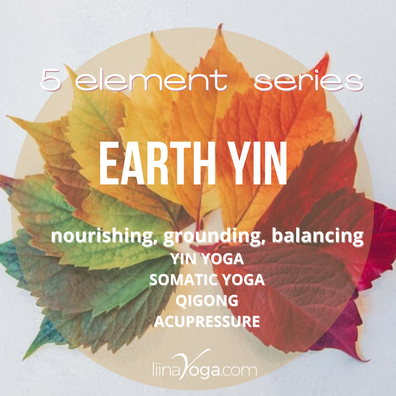
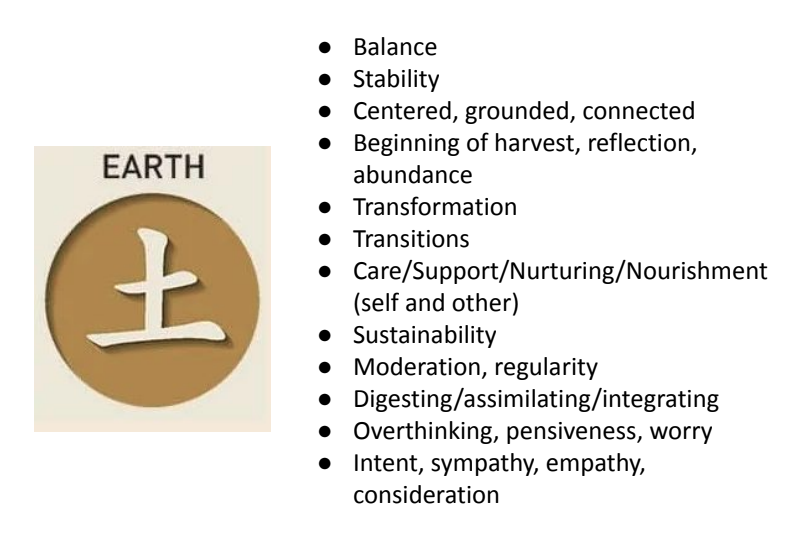
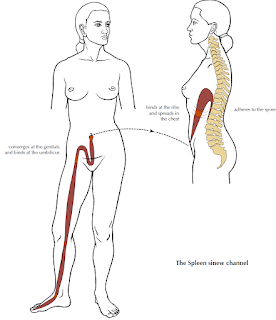
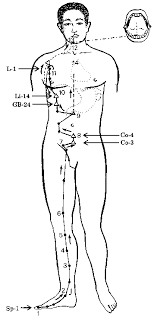
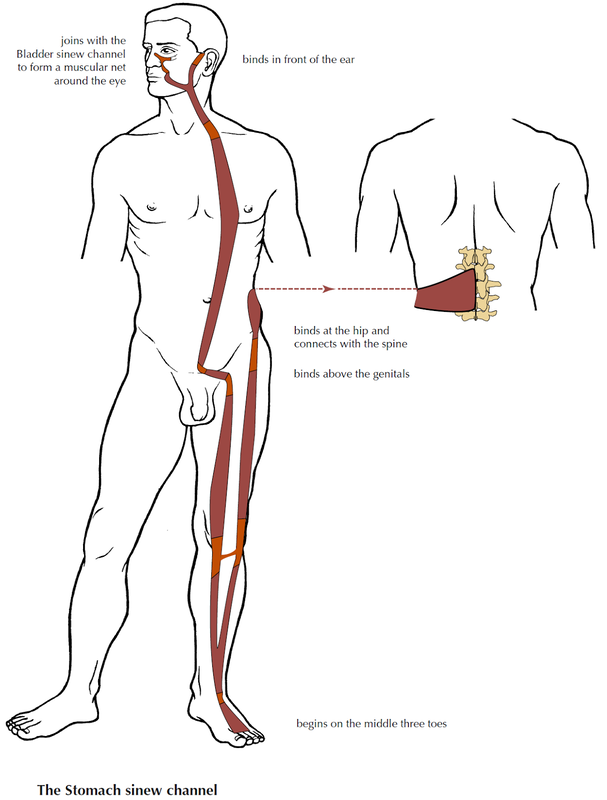
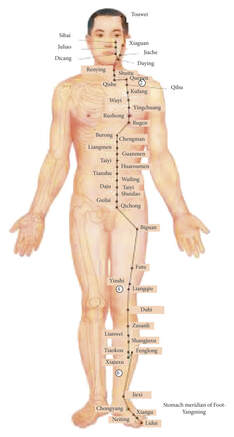
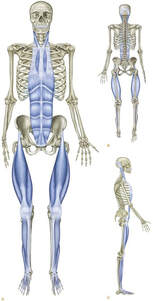
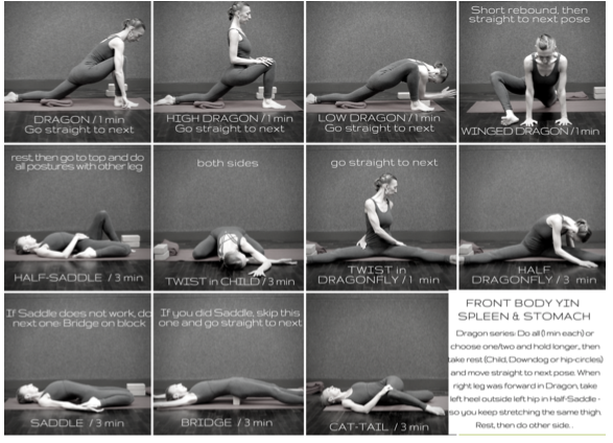
 RSS Feed
RSS Feed